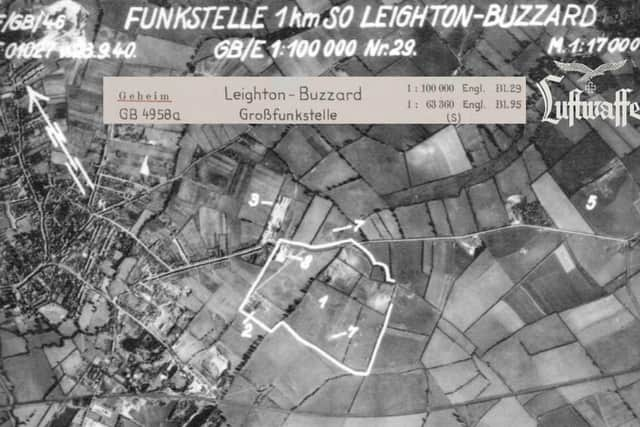Leighton Buzzard's Wartime History - The secret RAF bunker that played a vital role during the Battle of Britain
and live on Freeview channel 276
A secret bunker in Leighton Buzzard was the home of an RAF command headquarters designed to take over if its London location was attacked during the Second World War.
But while this never happened, the bunker did not sit idle, and was a hub of activity during the Battle of Britain.
Advertisement
Hide AdAdvertisement
Hide AdWhen RAF Leighton Buzzard – later RAF Stanbridge – was created in 1938, its role as the nation’s strategic communications hub was part of a home air defence strategy, originally created by the ‘Air Defence of Great Britain Command’ directed by the RAF. Its headquarters and operations room was located at an old mansion in Stanmore Park, Middlesex, known as Bentley Priory.


Possibly its most famous resident, Sir Hugh Dowding, worked to prevent the destruction of our air force by the Luftwaffe and caused Hitler to delay his planned ‘Conquest of England’. This was the Battle of Britain.But the London location was vulnerable to air bombing and possible ground attack so a reserve headquarters was needed somewhere safer whilst still allowing excellent communication infrastructure, easy access to the main general post office cables and good road links to London.
Both sites could operate in parallel, to ensure continuity in the event of incident, and also when maintenance was required.
The site chosen for ‘Alternative Fighter Command Headquarters’ and an underground ‘Emergency Operations Room’ was RAF Leighton Buzzard.
Advertisement
Hide AdAdvertisement
Hide AdThe heavily reinforced underground bunker on the road to Stanbridge, was built and fully fitted out by July 1939, four months before its equivalent at Bentley Priory. Had the Priory been disabled, the RAF would move everything, and everyone, to RAF Leighton Buzzard.
Across the years, a view developed locally that as Bentley Priory never did get destroyed, the RAF Leighton Buzzard bunker must have sat idle.
Research, combined with National Archive documents and the now declassified secret diaries of Sir Gordon Radley (then Assistant Staff Engineer at the General Post Office (GPO), responsible for fitting out the two bunkers) have helped to show that Leighton Buzzard’s secret bunker operated in anger during the 1940 Battle of Britain, and well into 1941.
It operated instead of Bentley Priory when air raid circumstances dictated, the two sites never offline at the same time ensuring constant standby cover. Sir Gordon gave detailed explanations of the activities within ‘Alternative Fighter Command’ and how it evolved alongside Bentley Priory with parity in its innovations and modifications. The National Archive documents explain how the highly sensitive ‘Fighter Command Alternative Headquarters’ location would need to be defended.
Advertisement
Hide AdAdvertisement
Hide AdLocal accounts have recounted that it’s rural location put RAF Leighton Buzzard out of harms way, Imperial War Museum and Royal Air Force records show through highly detailed Luftwaffe aerial images, taken during the height of the Battle of Britain, that the site was anything but secret. Contemporary operations records confirm frequent bombing activity over those months.
With the Emergency Operations Room constantly updated and ready for action, it became a natural environment in which to start to address a shortfall in skilled Operations Room personnel. This would see RAF Leighton Buzzard internationally recognised for its ‘RAF Plotters School’, orchestrated by the Headquarters of RAF No.60 Group (Radar), in nearby Plantation Road.
By 1943 the bunker was refitted to accommodate desperately needed additional teleprinters and communications machinery for RAF Central (Q Central). When its end came, this nationally important bunker was believed to have been backfilled with rubble and then dug up and built over for housing.